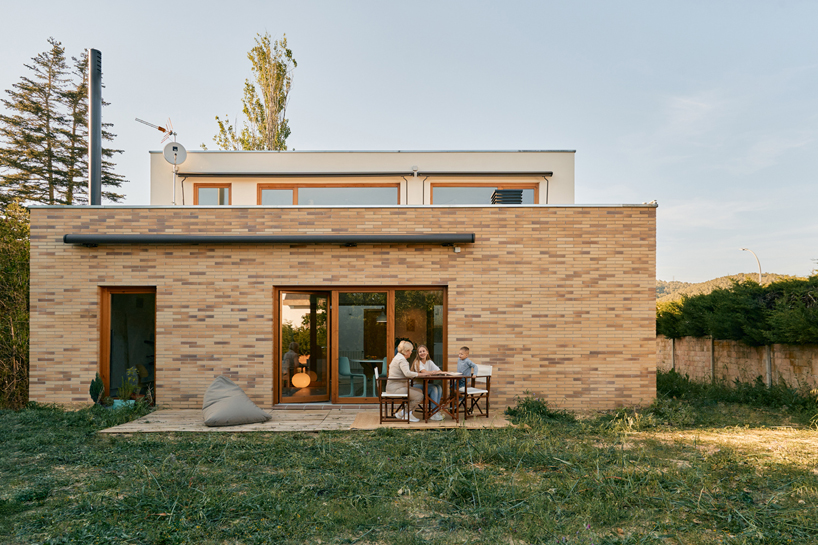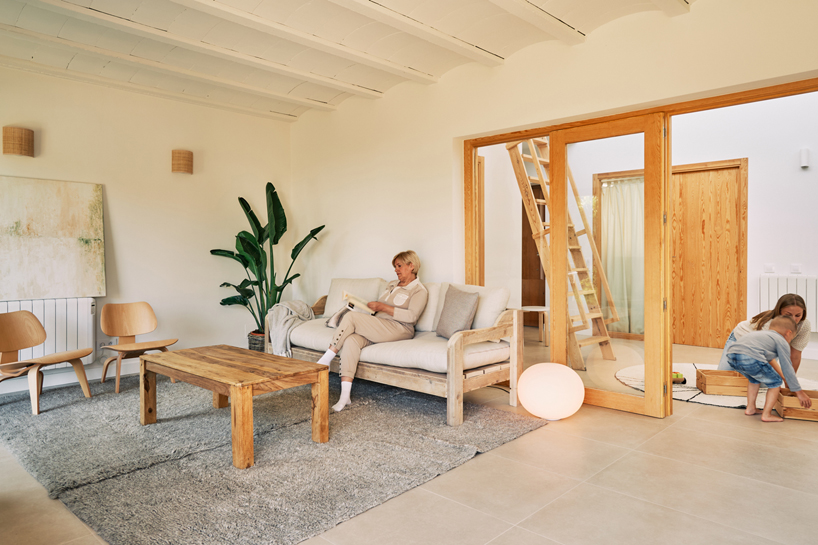slow studio’s passive house in spain unfolds around bioclimatic atrium
slow studio builds sustainable house in spain
Slow studio designed a low-energy residential building in the mountainous area of Massís del Garraf, Spain. The project aims to achieve zero consumption and a healthy interior environment through bioclimatic strategies in a single-family home. This passive house is based on a tight program of 90 sqm. To optimize the climatic performance of a limited surface area, the team opted for a compact square floor plan. This has the advantage of avoiding thermal losses in the facades but also the disadvantage of not allowing direct sunlight to the south in the rear rooms. For this reason, a central space that captures light and heat was designed in the form of a covered atrium. With openings to the south in the upper part, it rises above the roof.

the exterior surface uses brickwork | all images by Carla Step
planning around a bioclimatic atrium for energy-saving
The layout of the rooms is arranged around the bioclimatic atrium. This central double-height space accumulates heat thanks to an upper opening to the south and sustains the temperature of the north zone rooms while generating crossed ventilation. In this way, the atrium produces a second facade for solar gain and stores hot air that is used for the ventilation of the house. The team used the bioclimatic atrium to achieve stratified air, with hot air rising above, as well as solar collection in its upper part. The central space, also, has a multipurpose program, which can be used as an extra living room, dining room, or simply a free access space to night areas. Finally, overlooking views to the north, the atrium has a small mezzanine accessible with a library-type staircase that can be moved along or get hidden when it is not necessary.

the living room is arranged next to the central atrium
heating and ventilation made easier in this passive house
The construction system is based on a double wall, using stone for the interior and brickwork for the exterior surface, retaining insulation between them. At the entrance, the exposed brick wall generates a semi-open lattice that makes the access to the house stand out. Sun protection is achieved by using external textile blinds on the openings of the house. To generate hot water and heating on cold winter days, a biomass boiler with pellets that feeds a system of conventional radiators was installed. The air freshening in this house is carried out through the central atrium using ventilators that introduce air from the highest point of the gallery and whose extraction is located in the wet areas of the bathrooms and kitchen.

